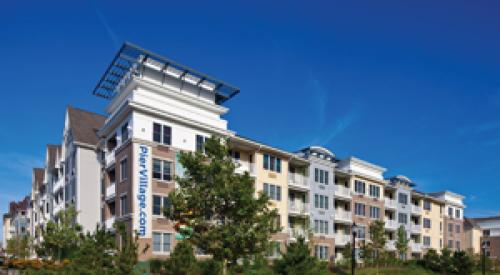|
Gone is the age of extravagance, where supersized floor plans and expensive amenities abound. Instead, many builders have changed their tact to reengineer smaller product lines to appeal to today's credit-strapped customers.
KB Homes began downsizing some of its homes in 2007. A 3,400-square-foot home that sold for $450,000 became a 2,400-square-foot home selling for $300,000. This year, KB launched a line of homes that start at 1,230 square feet and sell for just over $200,000. Other builders have taken similar steps.
Because home buyers are feeling pressure to settle for houses that aren't their dream homes, some new buyers harbor some degree of dissatisfaction before the sales process even begins. There are ways, however, to ensure customer delight even as you reduce the square footage.
 |
| The average square footage for new single-family homes sold reached a record high in 2006, the same time the number of people living in each household was at an all-time low. The new trend is toward smaller homes with higher occupancy rates. Graphic Credit: U.S. Census Bureau |
Lean engineering
Lean engineering is one way to trim waste from the construction process. However, blindly undoing the excesses of the past two decades is not the right approach. Rather, builders should research to make sure they cut only those amenities that aren't as important. For example, some builders report that big formal entries, high ceilings and even granite countertops are not as important to today.
In smaller homes, functional design elements are taking on greater importance. Built-in storage spaces, closets, shelves and open floor plans maximize the smaller spaces and make them more flexible and utilitarian. Rather than a dedicated media room or formal living room, many home buyers are happy with a multipurpose room that combines a home theater with a game room and living room.
Energy efficiency
Other ways to drive up customer delight is to embrace energy efficiency in the design of these smaller homes. According to a 2007 consumer study by the NAHB, a whopping 91 percent of consumers said they would choose a highly energy-efficient home with lower utility bills over a home without energy-efficient features that cost them 2-3 percent less.
Outdoor living
Meanwhile, functional outdoor living spaces focused around outdoor cooking add real value to homes without the traditional costs of construction. For the first time in the NAHB survey, two of the top 10 most desired home features were related to outdoor living: exterior lighting and a fenced yard.
The one thing consumers are not willing to give up, however, is quality. According to the NAHB survey, only 7 percent of consumers said they would accept a house with less-expensive building materials if that would make it more affordable. This is good news for builders, too, because quality construction typically means fewer warranty calls and greater customer loyalty.
| Author Information |
| Paul Cardis is CEO of Avid Ratings, a research and consulting firm specializing in customer satisfaction for the home building industry. You can reach him at paul.cardis@avidratings.com. |
|










